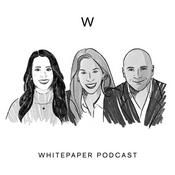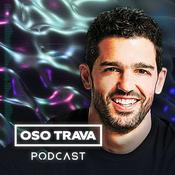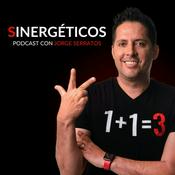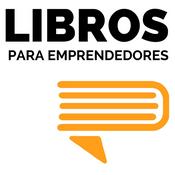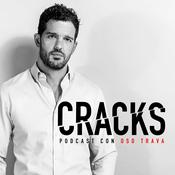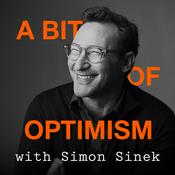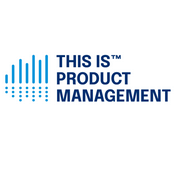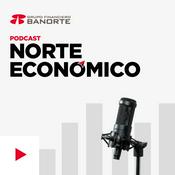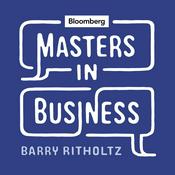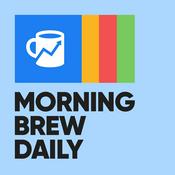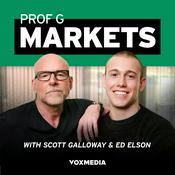Tech Currents: Exploring the human side of technology.
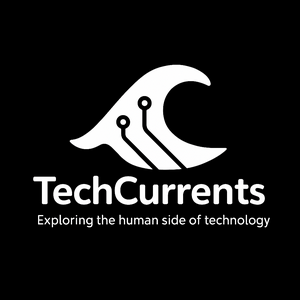
15 episodios

TechCurrents: The dangers of real burnout!
19/9/2025 | 1 h 13 min
Join Sam Cavaliere and Ron Melanson on the TechCurrents Podcast as they welcome Michael Fox for a profound discussion on burnout. Michael shares his personal experience, including a hospitalization involving strong physical symptoms, which he later understood to be a physical manifestation of chronic stress and burnout. This episode clarifies that burnout is distinct from mere stress or hard work. Michael details early warning signs such as unhealthy high motivation, the inability to disengage from work, and toxic "turn and burn" workplace cultures that deplete employees. The conversation also provides crucial insights for leaders, stressing the importance of a "family first" approach, prioritizing self-care ("put your own mask on first"), and maintaining accountability without confusing it with servant leadership. The episode addresses overcoming the stigma of burnout through education and internal work to combat shame, and rebuilding self-trust with practice, dedicated effort, and support from coaches or other communities. Michael's stark advice for those on the brink of burnout is that "it's not an 'if', it's a 'when'", highlighting that simply hoping for improvement is not a viable strategy as the situation will likely worsen. The hosts encourage listeners to reach out to colleagues they suspect are struggling, as external intervention can be vital. This episode offers a candid, authentic discussion on mental and physical well-being in the demanding tech world, providing practical takeaways and support. You can see a video of Michaels presentation here.

The Tech Layoff Labyrinth: Unpacking the Perfect Storm
14/7/2025 | 1 h 2 min
Tech Layoffs, LinkedIn Lunacy, & OpenAI: What's Next? This week, we dive into the staggering tech layoffs, revealing the surprising link to the Tax Cuts and Jobs Act of 2017. We also explore the wild world of inappropriate content on LinkedIn and what it means for your career. Plus, we discuss OpenAI's new competition for Google and Microsoft and offer crucial advice for job seekers. Our new merch store is launching soon! We reference a colleague who now works in the area of personal finance. Patrick Giamanco is a former 'Softie who is now a financial advisor. You can connect with him at https://linkedin.com/in/patrickgiamanco or https://www.edwardjones.com/us-en/financial-advisor/patrick-giamanco #podcast #techlayoffs #techindustry #jobsearch #careeradvice #linkedin #AI

S1E13 Laura Metzer discusses the state of mental health with job eliminations.
23/6/2025 | 1 h 19 min
The Tech Currents podcast features a conversation between co-hosts Sam Cavaliere and Ron Melanson, joined by former Microsoft professional Laura Metzer, discussing the psychological impacts of job loss in the tech industry. Laura, who was laid off in February 2023, shares her personal journey of reinvention by becoming a mental health counselor, emphasizing the growing need for support among displaced workers. The discussion covers the stigma and shame associated with layoffs, the importance of resilience, and the dangers of isolation, advising listeners to seek support, customize job searches, and build strong in-person networks rather than solely relying on social media. The hosts and guest stress the need for empathy and proactive support for those struggling, highlighting that mental well-being is crucial for navigating career transitions in an evolving industry.

Tech Currents and Tee Morris Part 2
03/6/2025 | 1 h 8 min
Here's a short description for your podcast episode, optimized for search engines and LinkedIn: Tech Currents Podcast: AI, Copyright & The Future of Work – Tee Morris Interview, Part 2 Dive deep into the evolving world of AI, tech ethics, and the "Facebooking" of LinkedIn in Part 2 of our exclusive interview with Tee Morris on the Tech Currents podcast, hosted by Sam Cavaliere and Ron Melanson. In this compelling conclusion, Tee Morris, a pioneer in podcasting, paranormal investigator, author, engineer, and AI developer, offers sharp insights into pressing technology challenges: AI Utilization & Authors' Copyrights: The discussion confronts the thorny challenge of establishing fair payment mechanisms for authors whose works are used to train AI models. Morris highlights issues like Harper Collins selling non-fiction titles for AI training without author negotiation. Protecting AI-Generated Art: Tee Morris expresses strong opinions against granting copyright protection to AI-generated art, suggesting it be termed "computer rendered artistic product". He cites the disastrous Willy Wonka experience as an example of AI art failures. Ethical Implications of AI: Explore AI's impact on job markets (actors, graphic artists, job applicants), ethical concerns in healthcare decision-making, and the critical need for "clearbox technology". Current Technology Trends: A critical look at the societal expectation for instant, often rushed and buggy, software updates ("fix it in post") and a perceived loss of respect for technology, exemplified by issues like the CrowdStrike incident and problematic vehicle software updates. The "De-evolution of LinkedIn": A candid critique of LinkedIn's shift from a professional networking tool to a platform increasingly resembling "Facebooking", plagued by scam artists, excessive motivational content, and a lack of moderation. Don't miss Tee Morris's unfiltered perspective and invaluable lessons. His latest season of Old Spirits Investigations also drops this Saturday on YouTube! https://www.youtube.com/channel/UC0xUoaI9q95NrS6hYGOegjg

The TechCurrents Podcast and Special Guest, Harry Patz
19/5/2025 | 1 h 7 min
Tune into the TechCurrents Podcast as hosts Sam Cavaliere and Ron Melanson chat with tech veteran Harry Patz, known for driving billion-dollar growth at companies like Microsoft, Samsung and Syniverse. Harry shares his insights on the duality of leadership and management, emphasizing Servant Leadership and fostering empathy by supporting your team. Learn about his experience leading the Samsung team that won the NY Mets stadium deal, highlighting how to build a culture of smart risk-taking and continuous learning rather than penalizing mistakes. Harry also recounts formative career lessons from his Microsoft days, including the critical importance of accountability. Looking ahead, Harry, enrolled in the MIT AI strategy program, discusses how Artificial Intelligence will make human skills like thinking and motivating even more essential in leadership. This episode offers valuable career advice and perspectives from a seasoned industry leader. #TechCurrentsPodcast #Leadership #ServantLeadership #Management #Technology #AI #ArtificialIntelligence #CareerAdvice #Empathy #Mentorship #TechPodcast #ProfessionalDevelopment #CareerGrowth #Innovation
Más podcasts de Economía y empresa
Podcasts a la moda de Economía y empresa
Acerca de Tech Currents: Exploring the human side of technology.
Escucha Tech Currents: Exploring the human side of technology., Whitepaper y muchos más podcasts de todo el mundo con la aplicación de radio.net

Descarga la app gratuita: radio.net
- Añadir radios y podcasts a favoritos
- Transmisión por Wi-Fi y Bluetooth
- Carplay & Android Auto compatible
- Muchas otras funciones de la app
Descarga la app gratuita: radio.net
- Añadir radios y podcasts a favoritos
- Transmisión por Wi-Fi y Bluetooth
- Carplay & Android Auto compatible
- Muchas otras funciones de la app


Tech Currents: Exploring the human side of technology.
Descarga la app,
Escucha.
